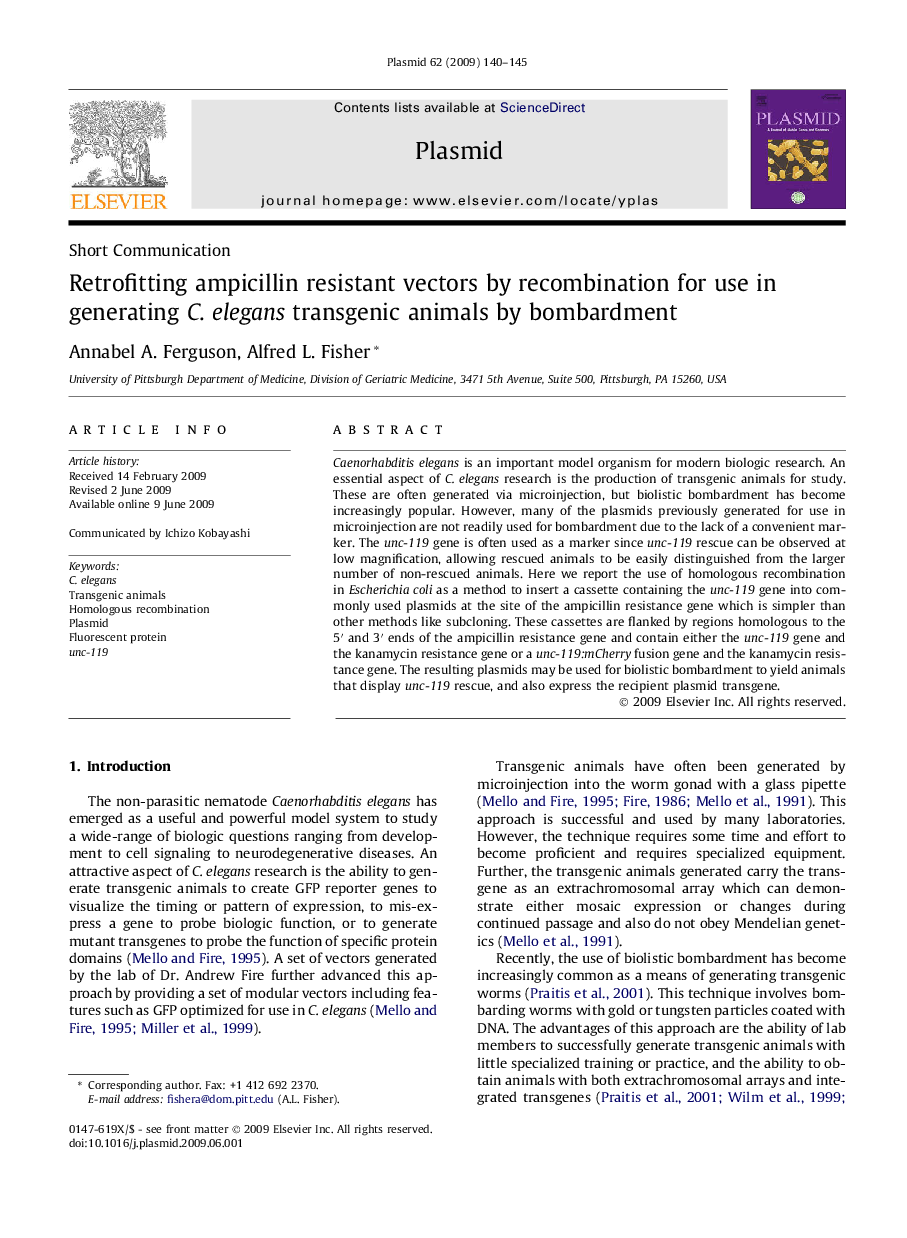| Article ID | Journal | Published Year | Pages | File Type |
|---|---|---|---|---|
| 2824244 | Plasmid | 2009 | 6 Pages |
Caenorhabditis elegans is an important model organism for modern biologic research. An essential aspect of C. elegans research is the production of transgenic animals for study. These are often generated via microinjection, but biolistic bombardment has become increasingly popular. However, many of the plasmids previously generated for use in microinjection are not readily used for bombardment due to the lack of a convenient marker. The unc-119 gene is often used as a marker since unc-119 rescue can be observed at low magnification, allowing rescued animals to be easily distinguished from the larger number of non-rescued animals. Here we report the use of homologous recombination in Escherichia coli as a method to insert a cassette containing the unc-119 gene into commonly used plasmids at the site of the ampicillin resistance gene which is simpler than other methods like subcloning. These cassettes are flanked by regions homologous to the 5′ and 3′ ends of the ampicillin resistance gene and contain either the unc-119 gene and the kanamycin resistance gene or a unc-119:mCherry fusion gene and the kanamycin resistance gene. The resulting plasmids may be used for biolistic bombardment to yield animals that display unc-119 rescue, and also express the recipient plasmid transgene.
